We’ve all had those restless nights, tossing and turning, desperately chasing those elusive z’s. But did you know our canine companions can also struggle with sleep disturbances? Imagine, for a moment, your furry friend snuggled up beside you, letting out an occasional snore. While this might seem cute or even comical at first, it could hint at a deeper issue: sleep apnea in dogs. This isn’t just about them missing out on their beauty sleep; it has real health implications. As loving pet parents, understanding and addressing these sleep challenges is crucial for our four-legged family members’ well-being.
Enter CPAP for dogs. You might’ve heard of CPAP devices for humans, but what role do they play in our pets’ lives? This blog dives deep into the world of dog sleep apnea, unraveling its mysteries, signs, and treatments. From decoding the difference between a harmless snore and a concerning one, to naturally supporting your pup’s sleep health, we’ve got it all covered. Because, after all, a well-rested dog is a happy dog—and don’t we all want that wagging tail and bright-eyed look greeting us each morning? Let’s journey together into understanding more about this topic, ensuring that both you and your pup sleep soundly at night.
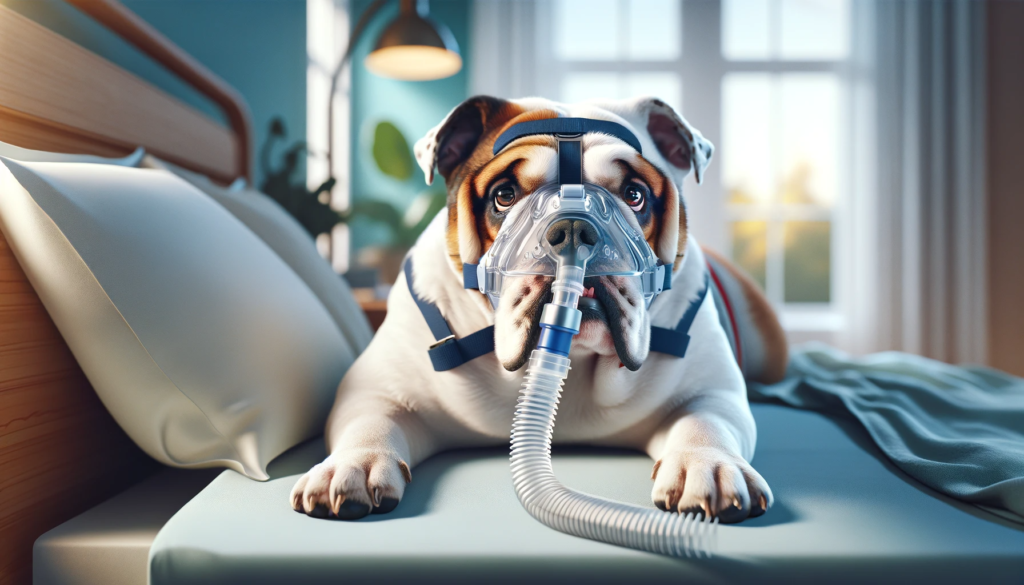
What Does CPAP Stand For?
In the world of sleep science and respiratory health, CPAP is a term that stands out, often offering a beacon of hope for those grappling with sleep disturbances. CPAP stands for Continuous Positive Airway Pressure. At its core, a CPAP device is designed to ensure that the airway remains open during sleep. It does so by delivering a continuous stream of air through a mask, preventing the airway from collapsing, which is a common cause of interruptions in breathing during sleep.
While many are familiar with its use in humans—particularly for those with sleep apnea—what might surprise you is that this technology is also available for our canine companions. Yes, our furry friends, too, can benefit from this device if they’re diagnosed with sleep apnea. It can offer them a more restful night and reduce the risks associated with interrupted breathing. As we delve deeper into the realm of dog sleep apnea, understanding the role and function of CPAP becomes invaluable. Not just as a treatment option, but as a testament to the advancements in veterinary care, ensuring our pets live their healthiest, happiest lives.

Do Dogs Have Sleep Apnea?
The idea that our fur-babies might have sleep apnea can initially seem surprising. After all, don’t we often envy the ease with which they seem to drift off to dreamland, chasing imaginary squirrels or fetching phantom sticks? But, just as with humans, dogs too can experience sleep disorders, and sleep apnea is one of them.
Sleep apnea in dogs is a condition where they experience brief and repeated interruptions in their breathing during slumber. These interruptions or pauses can last a few seconds to a minute and may occur many times an hour. The root cause? Often, it’s a temporary blockage in their airway, similar to what happens in humans.
Certain breeds, particularly those with shorter snouts like Bulldogs, Pugs, and Boston Terriers, are more predisposed to sleep apnea due to their facial structure. Their compressed nasal passages and shorter airways can make breathing more challenging, especially during sleep. But it’s not just limited to these breeds; any dog can potentially develop sleep apnea due to various factors, such as obesity or respiratory conditions.
Symptoms often mimic those seen in humans: loud snoring, restless sleep, and occasional pauses in breathing followed by choking or gasping sounds. Additionally, a dog with sleep apnea might exhibit daytime sleepiness, reduced energy levels, or even behavioral changes due to interrupted sleep.
In essence, while our canine companions might not complain about a groggy morning or reach out for a cup of coffee, they too can suffer from sleep disturbances. Recognizing and addressing these concerns early can ensure that your pup enjoys a deep, rejuvenating sleep, promoting overall health and well-being.
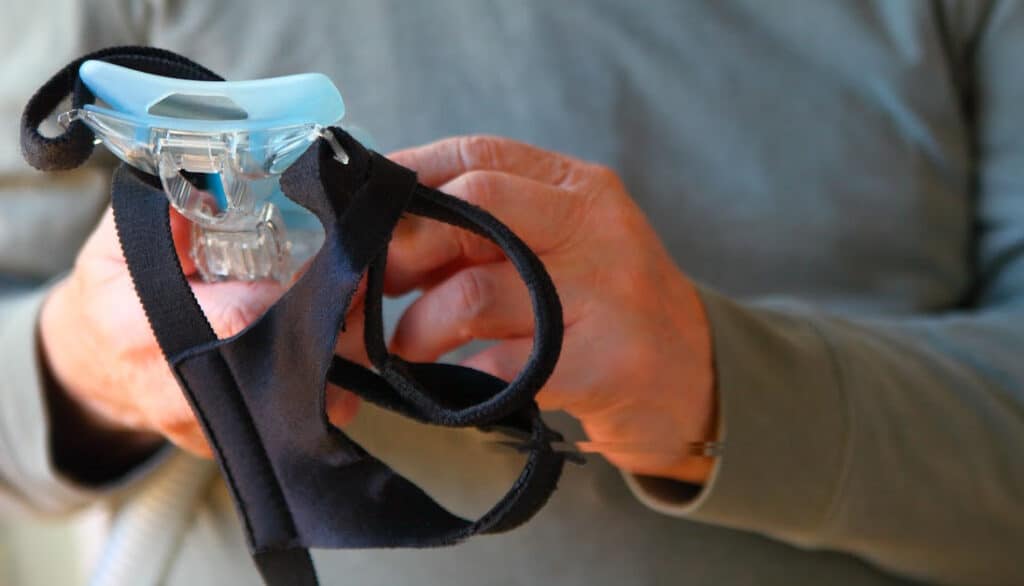
The Mystery of Dog Snoring: Is it Sleep Apnea?
Ah, the gentle (or sometimes not-so-gentle) sounds of our dogs snoring. It’s a soundtrack familiar to many pet owners, and it often evokes feelings of amusement or endearment. But when does a simple snore indicate something more concerning? Let’s unpack the enigma behind those nighttime noises.
First and foremost, it’s essential to understand that not all snoring indicates sleep apnea. Just as in humans, dogs can snore for a variety of reasons. The position they’re sleeping in, slight nasal congestion, or even being in a deep sleep phase can lead to the occasional snore. Factors like age, weight, and breed can also influence a dog’s predisposition to snoring. For instance, older dogs might snore more than younger ones, and as mentioned earlier, breeds with shorter snouts often have louder and more frequent snores due to their anatomy.
So, when should you be concerned? Sleep apnea’s hallmark isn’t just snoring but rather the pattern and what accompanies it. If your dog’s snoring is punctuated with frequent pauses in breathing, followed by choking or gasping sounds, it’s a sign that they might be experiencing sleep apnea. Moreover, if you notice your dog frequently waking up, appearing restless, or changing positions often during the night, these could be indicators of disrupted sleep patterns due to sleep apnea.
In addition, observe your dog during the day. Are they unusually fatigued, less responsive, or showing signs of irritability? A dog that’s not sleeping well at night might exhibit these symptoms during the day.
While a gentle snore from your dog might just be a quirk or due to temporary factors, it’s the pattern and accompanying signs that can hint at sleep apnea. Being observant and proactive can make all the difference in ensuring your furry friend gets the rest they deserve.

Detecting Sleep Apnea in Your Dog: What to Look Out For
Awareness and observation are the pet owner’s first line of defense when it comes to the well-being of our four-legged companions. Sleep apnea, though potentially disruptive and even dangerous, can be effectively managed when detected early. So, how can you tell if your dog is suffering from this condition? Let’s delve into the key signs and symptoms to keep an eye (or ear) out for.
- Irregular Breathing Patterns During Sleep: Beyond the occasional snore, watch for patterns of interrupted breathing. Pauses followed by sudden gasping or choking sounds can indicate a brief cessation of breath, a classic sign of sleep apnea.
- Restlessness: If your dog is constantly shifting positions, waking up frequently during the night, or seems unable to find a comfortable spot to sleep, they might be trying to adjust to ease their breathing.
- Daytime Fatigue: Sleep apnea can severely disrupt a good night’s rest. As a result, dogs with the condition might seem more lethargic or drowsy during the day, napping more frequently or displaying a general lack of energy.
- Changes in Behavior: Sleep deprivation can affect mood and temperament. A dog that’s not sleeping well might become more irritable, less responsive to commands, or show signs of anxiety or depression.
- Decreased Appetite: A lack of restful sleep can also impact appetite. If your dog is showing a sudden disinterest in food or eating less than usual, it could be linked to poor sleep quality.
- Morning Grogginess: Just like us, dogs with disrupted sleep may have difficulty waking up in the morning, appearing dazed or confused.
Detecting sleep apnea in dogs largely relies on the owner’s observational skills. While occasional snores or a single restless night shouldn’t be a cause for alarm, consistent patterns and multiple symptoms should prompt a consultation with a veterinarian.
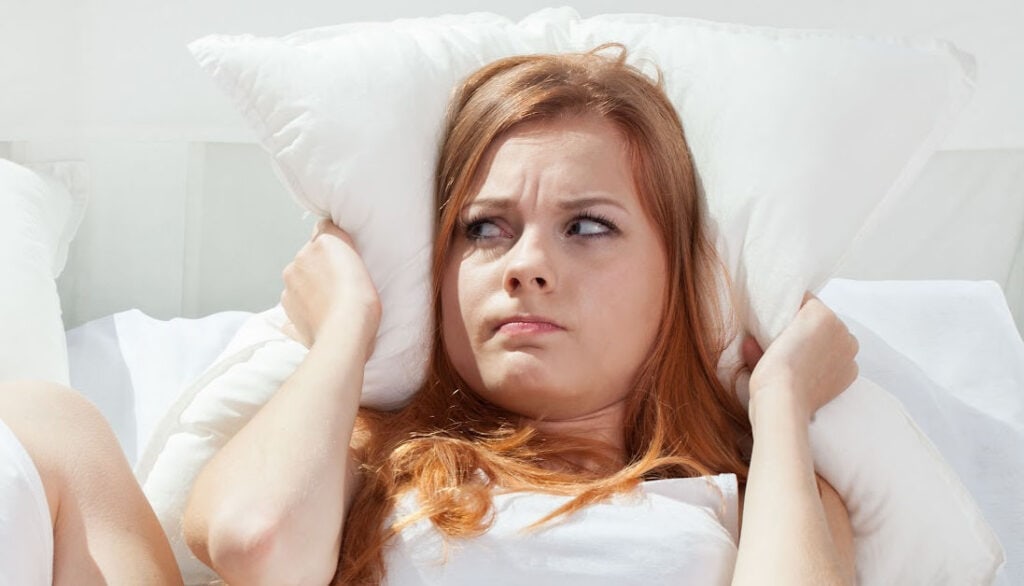
What Should I Do If I Suspect My Pup Has Sleep Apnea?
If you’ve observed signs that hint at sleep apnea in your furry friend, it’s natural to feel a mix of concern and urgency. The good news is, with prompt action and the right approach, sleep apnea in dogs can be managed effectively. Here’s a step-by-step guide on what to do next:
- Document the Symptoms: Before heading to the vet, spend a few nights documenting your dog’s sleep patterns. Take note of their breathing interruptions, snoring patterns, and any other symptoms you’ve observed. Videos can be particularly useful as they offer the vet a firsthand look at the issue.
- Schedule a Veterinary Appointment: Don’t delay in getting a professional opinion. Make an appointment with your veterinarian to discuss your concerns and present your observations. They will conduct a thorough examination to rule out other potential health issues.
- Follow Veterinary Advice: If your dog is diagnosed with sleep apnea, your vet will recommend a course of action. This could range from lifestyle changes, weight management plans (if obesity is a contributing factor), surgical options for extreme cases, or even introducing a canine CPAP machine.
- Implement Lifestyle Changes: As a proactive measure, ensure your dog maintains a healthy weight, as obesity can exacerbate sleep apnea symptoms. Introduce mild exercises, provide a supportive bed, and consider complementary treatments, which we will discuss later in this article.
- Monitor and Adjust: After implementing the suggested changes or treatments, keep a close eye on your dog’s sleep patterns. It may take time for improvements to manifest, but with patience and consistent monitoring, you can adjust interventions as needed.
In essence, if you suspect your pup has sleep apnea, taking swift and informed action is crucial. Remember, your dog’s comfort, health, and overall well-being are at stake.
The Science Behind Sleep Apnea in Dogs: Facts and Treatments
Sleep apnea is not just a simple inconvenience; it’s rooted in science and can have tangible effects on a dog’s health. To understand the condition better, and the treatments available, it’s important to delve a little deeper into the mechanics and science behind it.
Facts About Dog Sleep Apnea:
- It’s Not Just About Snoring: While snoring can be a sign, sleep apnea is essentially about the interruption of breathing during sleep. These interruptions can lower oxygen levels in the blood, which can have cascading effects on a dog’s overall health.
- Anatomical Predisposition: Some breeds are more prone to sleep apnea due to their physical makeup. Brachycephalic breeds—those with short noses and flat faces, like Pugs and Bulldogs—have narrowed airways, making them more susceptible.
- Obesity is a Major Factor: Overweight dogs have increased tissue in their throat. This excess tissue can obstruct breathing pathways, especially when relaxed during sleep.
- Other Causes: Beyond breed and weight, other factors can contribute to sleep apnea in dogs. This includes nasal obstructions, enlarged tonsils, or even hypothyroidism.
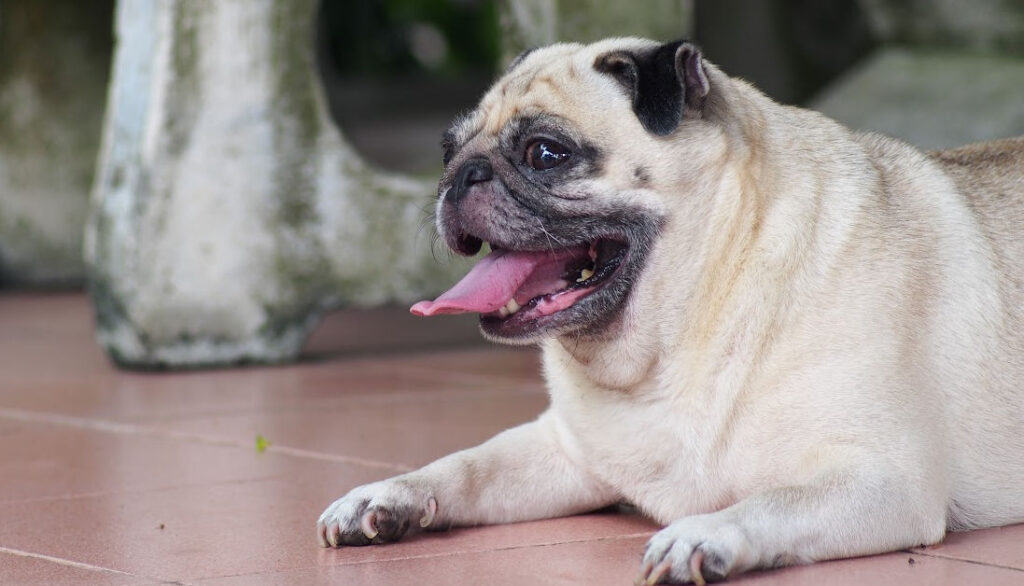
Treatments for Sleep Apnea in Dogs:
- Weight Management: One of the first lines of defense against sleep apnea, especially if obesity is a factor, is weight loss. A controlled diet and regular exercise can significantly alleviate symptoms.
- Canine CPAP Machines: Taking a cue from human treatments, there are CPAP machines designed for dogs. These devices help keep the dog’s airway open by delivering a continuous stream of air.
- Surgical Interventions: In severe cases, or if there’s a physical obstruction causing the apnea, surgery might be recommended. Procedures can range from removing obstructions to modifying the airway to facilitate better breathing.
- Complementary Modalities: There are supportive measures to help alleviate sleep apnea symptoms. These include providing a supportive bed, encouraging mild exercise, and using musculoskeletal support to aid the muscles in the throat and airway.
- Natural Aids: Some natural treatments, such as cartilage chews or sources like tracheas and tendons, can help in strengthening the dog’s airway and reducing the risk of collapse.
- Medications: In some cases, veterinarians might prescribe medications to reduce inflammation in the airway or address underlying conditions that might be contributing to the apnea.
In wrapping up, understanding the science behind sleep apnea in dogs equips pet owners to take proactive measures. Recognizing the facts, potential causes, and available treatments ensures that our canine companions receive the best care possible, allowing them to lead happier and healthier lives.
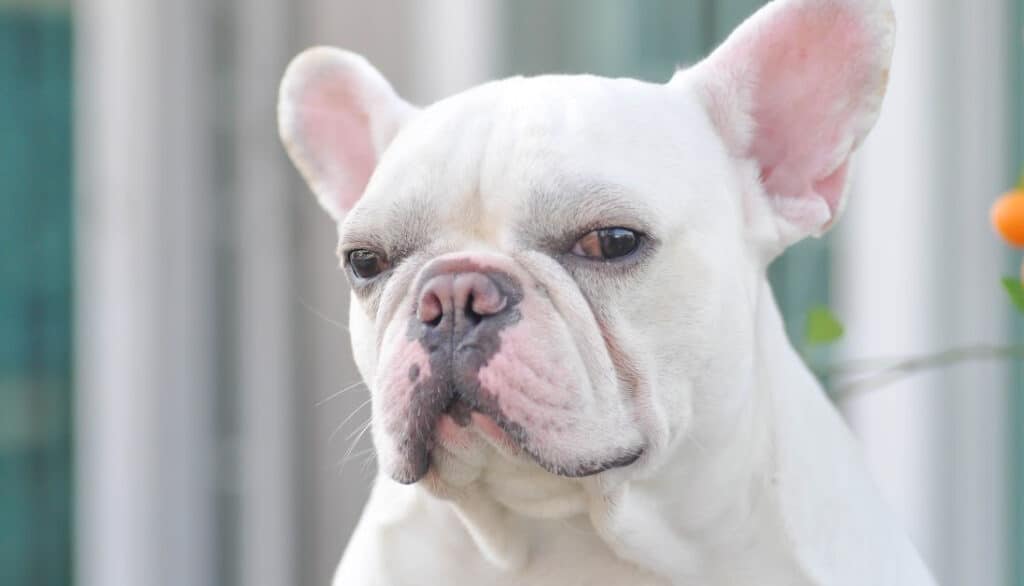
Complementary Modalities for Sleep Apnea: Supporting Your Dog Naturally
While traditional medical treatments are vital in managing sleep apnea, many pet owners are also seeking natural, complementary modalities to support their dogs. These approaches aim to boost the overall health of the pet and can be beneficial in alleviating some of the symptoms related to sleep apnea. Let’s explore these natural avenues.
1. Supportive Bedding:
- Purpose: Ensuring your dog has a comfortable and orthopedic bed can lead to better sleep quality.
- Recommendation: Consider beds made of memory foam which can cradle the dog’s body, ensuring the airway remains as open as possible. Elevated beds can also be beneficial, providing a slight incline which might facilitate better breathing.
2. Weight Management through Natural Diet:
- Purpose: Keeping your dog lean is crucial in reducing sleep apnea symptoms, especially if obesity is a concern.
- Recommendation: Focus on natural, grain-free diets that are rich in protein and low in fillers. Incorporate fresh vegetables and lean meats, and consider consulting with a pet nutritionist for a tailored plan.
3. Mild Exercise:
- Purpose: Regular activity can help maintain a healthy weight and improve overall respiratory health.
- Recommendation: Gentle walks, play sessions, or even canine yoga can help. Always ensure the exercise is appropriate for the dog’s age, breed, and health condition.
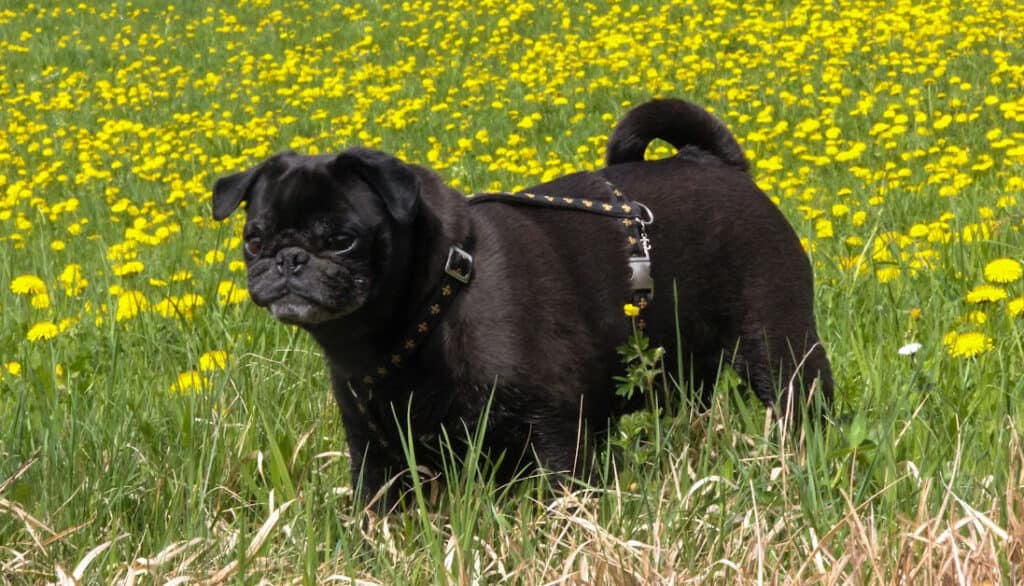
4. Canine Musculoskeletal Support by Standard Process:
- Purpose: Strengthening the muscles in the throat and airway can reduce the risk of collapse, a common cause of sleep apnea.
- Recommendation: This supplement is specifically formulated for musculoskeletal health and can be extremely beneficial. Always consult with a vet before introducing any new supplement.
5. Cartilage Chews and Sources:
- Purpose: Chewing can strengthen the muscles around the throat and also provide essential nutrients.
- Recommendation: Consider natural chews like tracheas, tendons, and other cartilage-rich treats. Not only are they a good source of glucosamine, but the act of chewing can be therapeutic.
6. Essential Oils:
- Purpose: Some essential oils are known to promote relaxation and improve breathing.
- Recommendation: Lavender can be calming, while eucalyptus might help open up respiratory pathways. However, it’s crucial to use oils that are safe for pets and in appropriate amounts. Always consult with a holistic vet before using essential oils.
7. Holistic Veterinary Consultation:
- Purpose: A holistic vet considers the entire well-being of the pet, offering natural remedies and treatments.
- Recommendation: If you’re keen on exploring more natural treatments, consider consulting with a holistic or integrative veterinarian. They can provide guidance on herbs, acupuncture, or other complementary modalities.
Supporting your dog naturally in their battle against sleep apnea can be a fulfilling and proactive approach. While these modalities should complement, not replace, traditional treatments, they offer an additional layer of care, ensuring your furry friend enjoys a holistic, well-rounded approach to health.

Conclusion
Sleep is as pivotal for our furry friends as it is for us. It’s a time of restoration, healing, and rejuvenation. As responsible pet owners, understanding the intricacies of conditions like sleep apnea, and taking proactive measures, becomes our earnest duty. Armed with knowledge, both scientific and holistic, we can offer our dogs a comprehensive approach to combat this challenge. From technological aids like canine CPAP machines to natural chews that strengthen throat muscles, every step we take ensures the comfort and well-being of our beloved pets.
However, it’s essential to remember that while information is powerful, individualized care is paramount. Always consult with a veterinarian before making significant changes to your dog’s routine or introducing new treatments.
At the heart of it all lies the profound bond we share with our dogs. They look up to us with unwavering trust and love, and in return, we strive to provide them with restful nights and joyful days. As we wrap up our exploration of dog sleep apnea, let’s carry forward a renewed commitment: to be ever watchful, ever caring, and ever ready to ensure our pets lead the healthiest lives possible. Sleep well, dear canines, for we’ve got your back, every night and every day.

Frequently Asked Questions
Sleep apnea in dogs is a disorder where breathing is momentarily interrupted during sleep. It can be caused by obstructions in the airway, obesity, or even certain breeds’ anatomical structures.
Yes, brachycephalic breeds, which have short noses and flat faces (like Bulldogs, Pugs, and Boston Terriers), are more susceptible due to their narrowed airways. However, any dog can develop sleep apnea, especially if overweight.
While snoring can be a sign of sleep apnea, the condition is defined by repeated interruptions in breathing during sleep. If your dog shows other symptoms like daytime fatigue, sudden gasping during sleep, or restlessness during the night, it’s essential to consult with a veterinarian for an accurate diagnosis.
While there are complementary modalities and lifestyle changes you can implement at home to support your dog, it’s crucial to consult with a veterinarian for a proper diagnosis and primary treatment recommendations. They might suggest specific interventions, including weight management, a canine CPAP machine, or even surgery in severe cases.
Yes, untreated sleep apnea can lead to various health complications, such as reduced oxygen levels in the blood, which can strain the heart and other vital organs. It can also result in behavioral changes, reduced immune function, and overall diminished quality of life for your dog.
